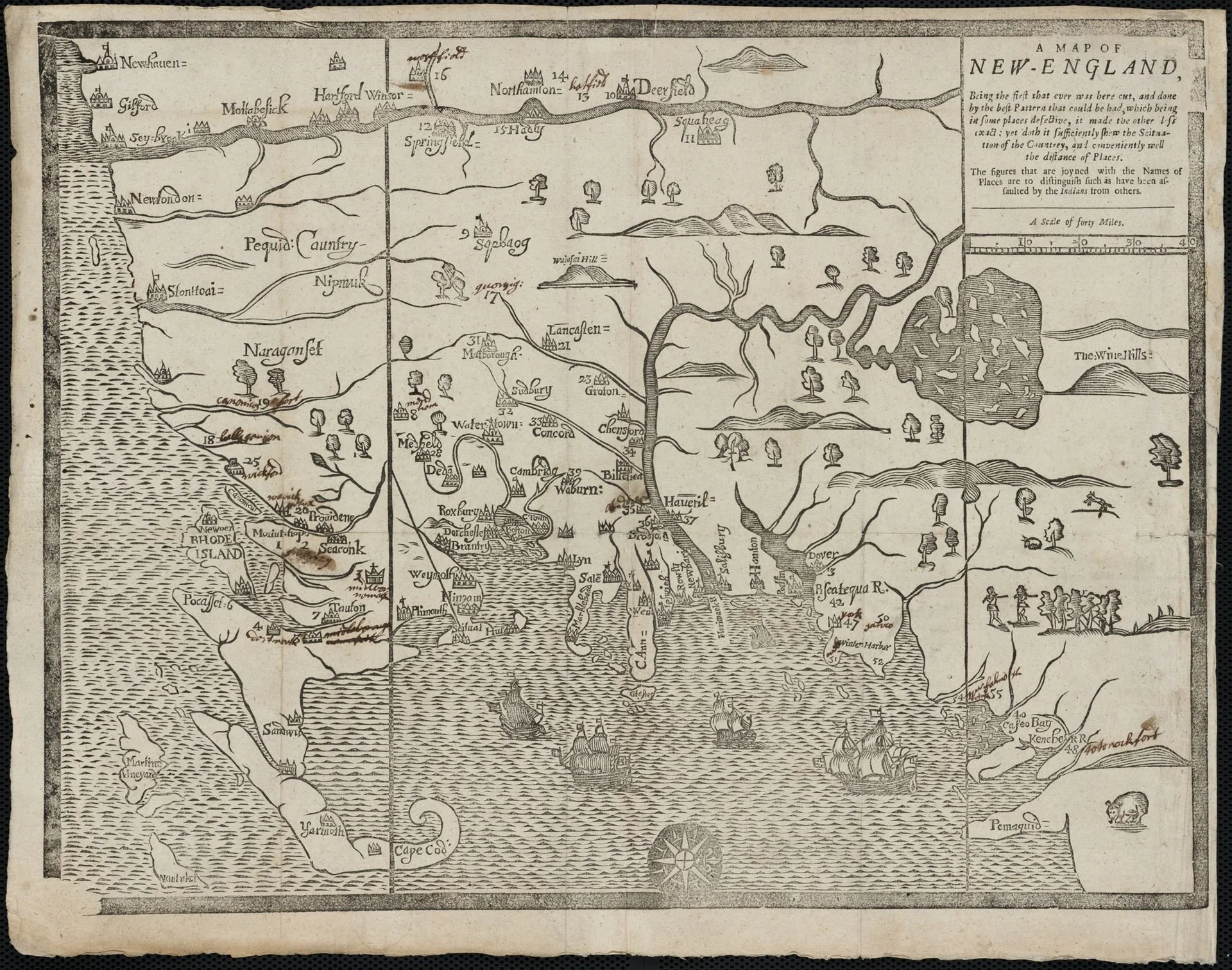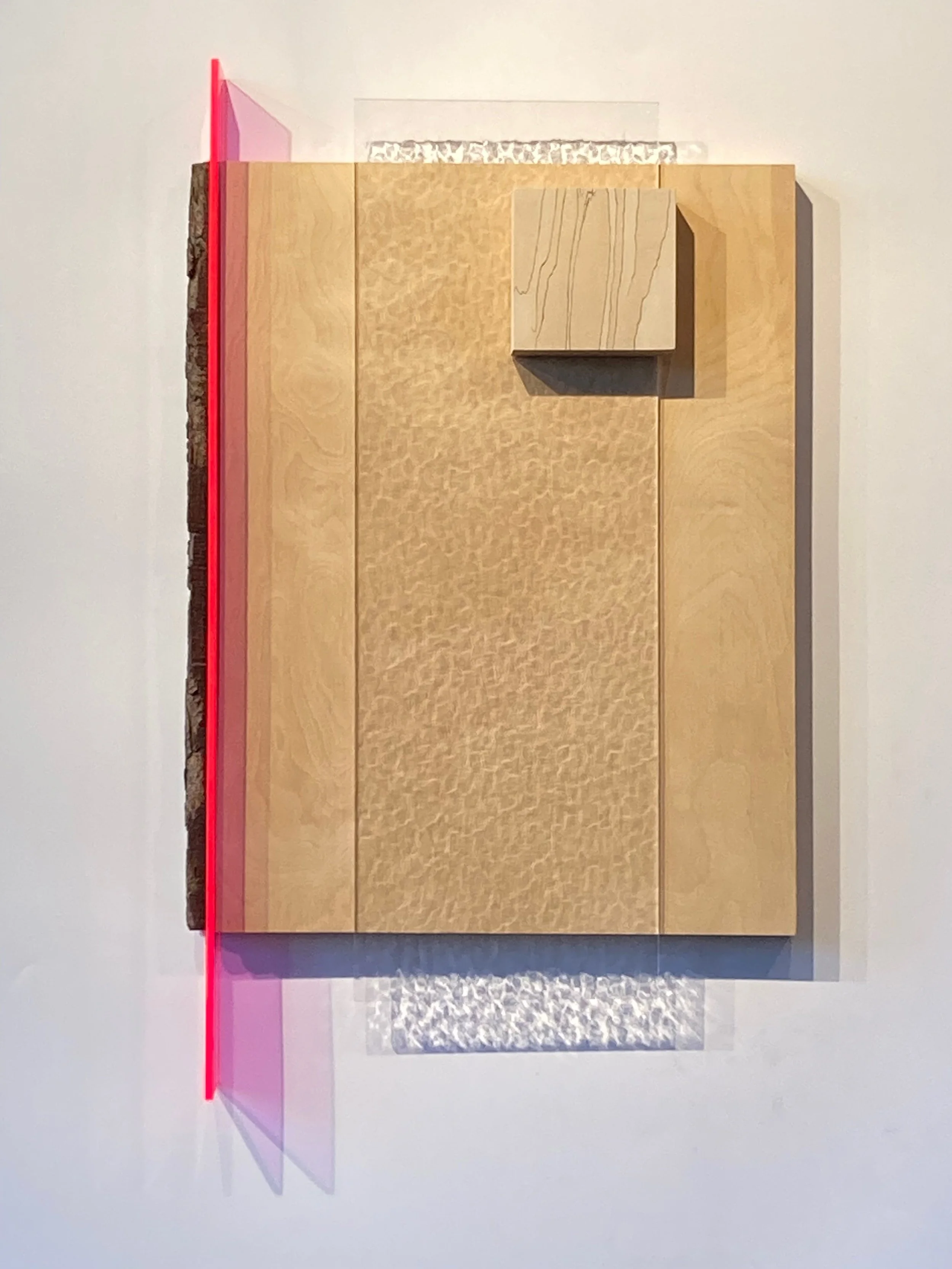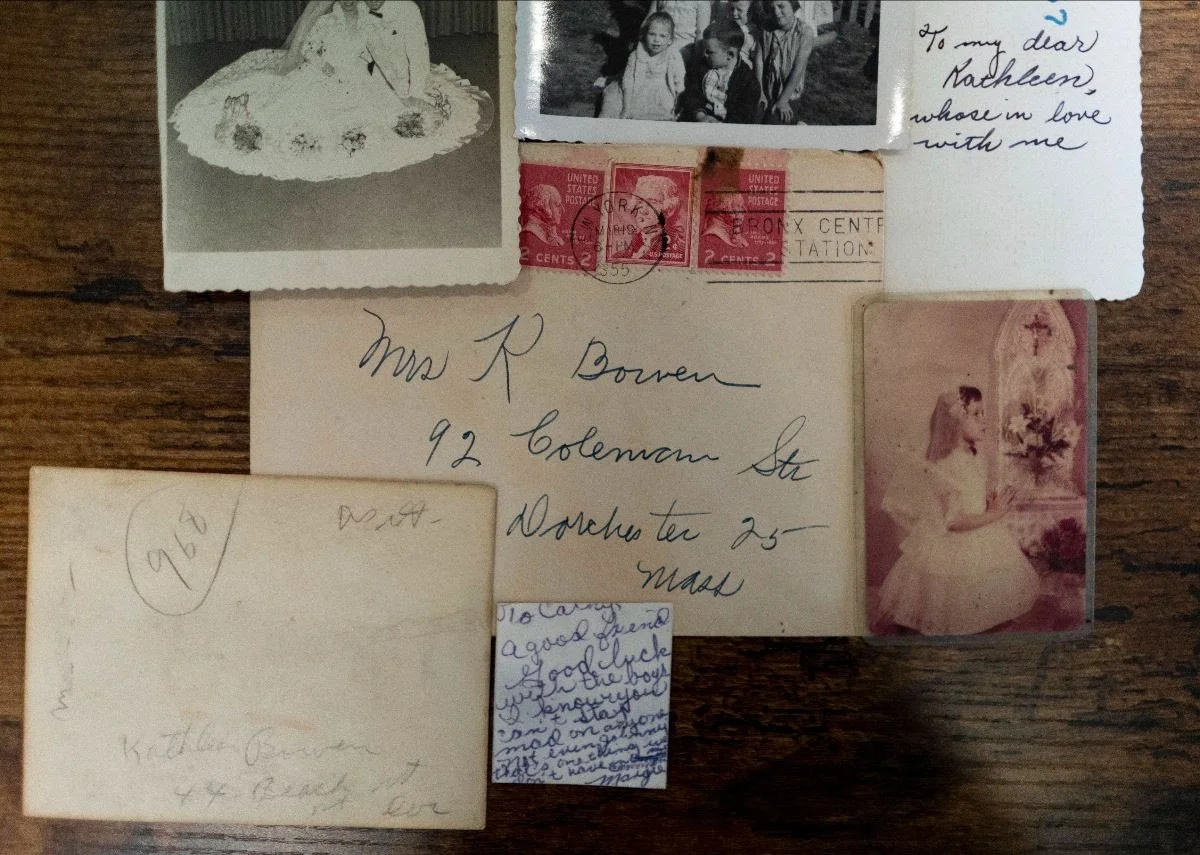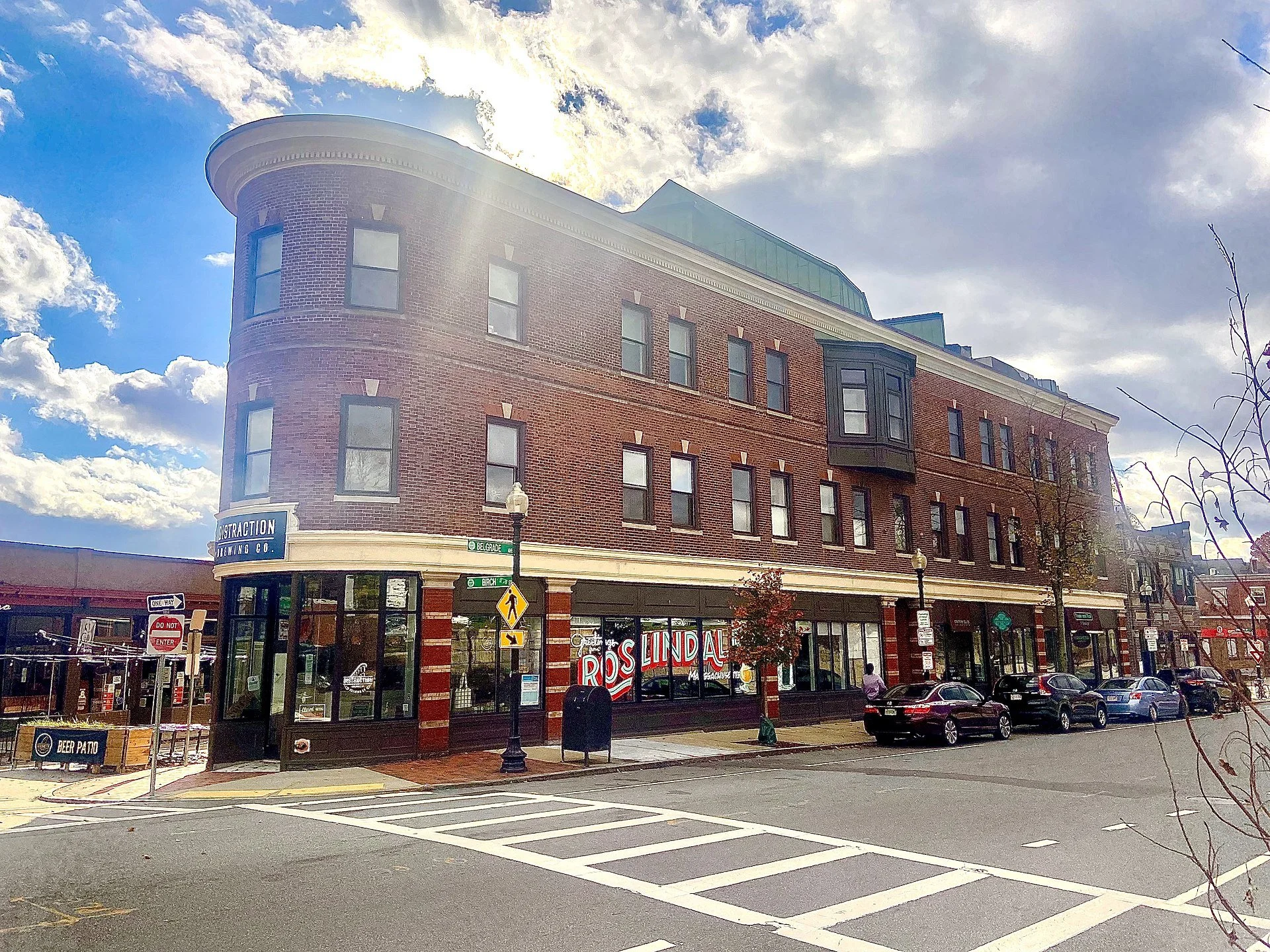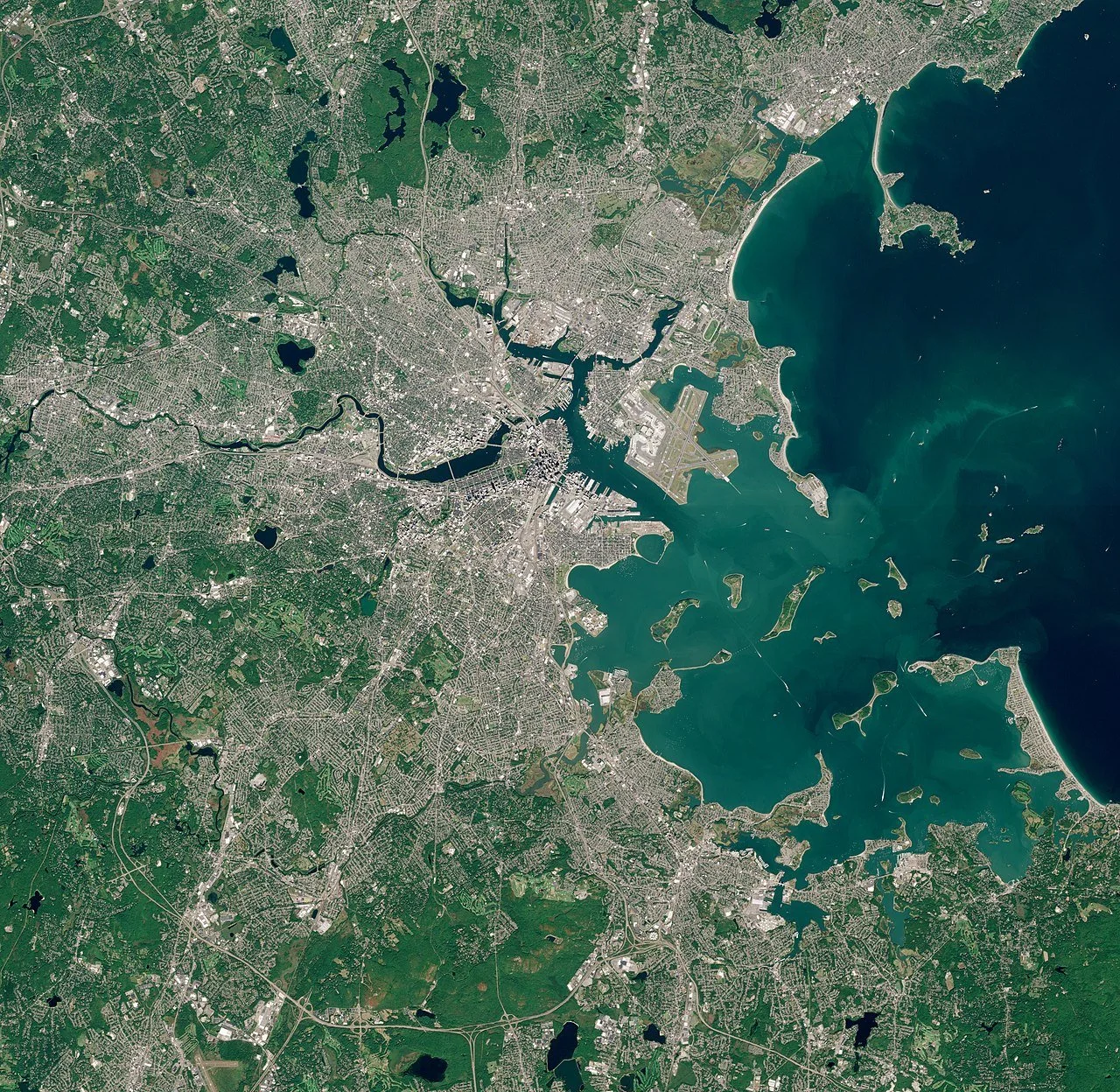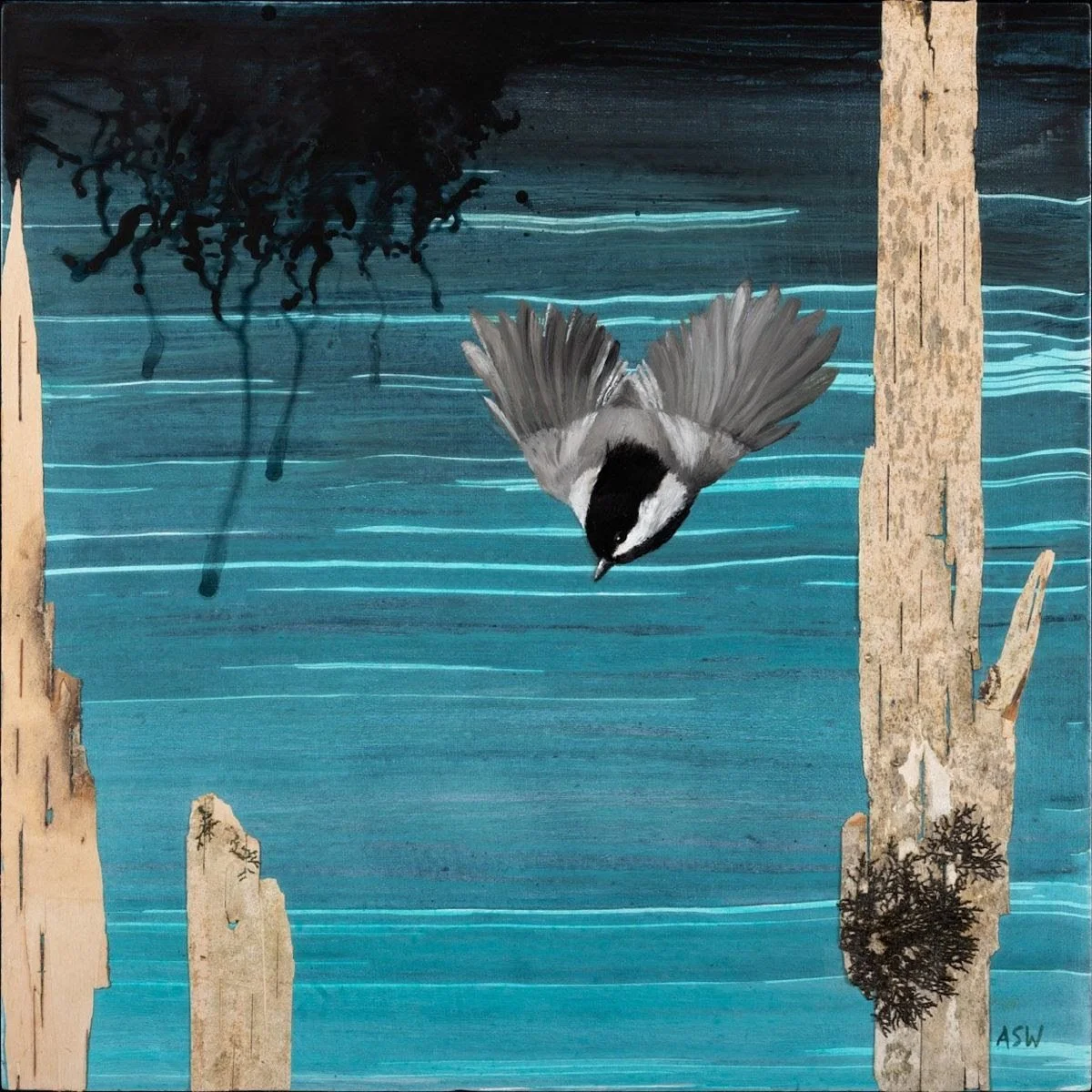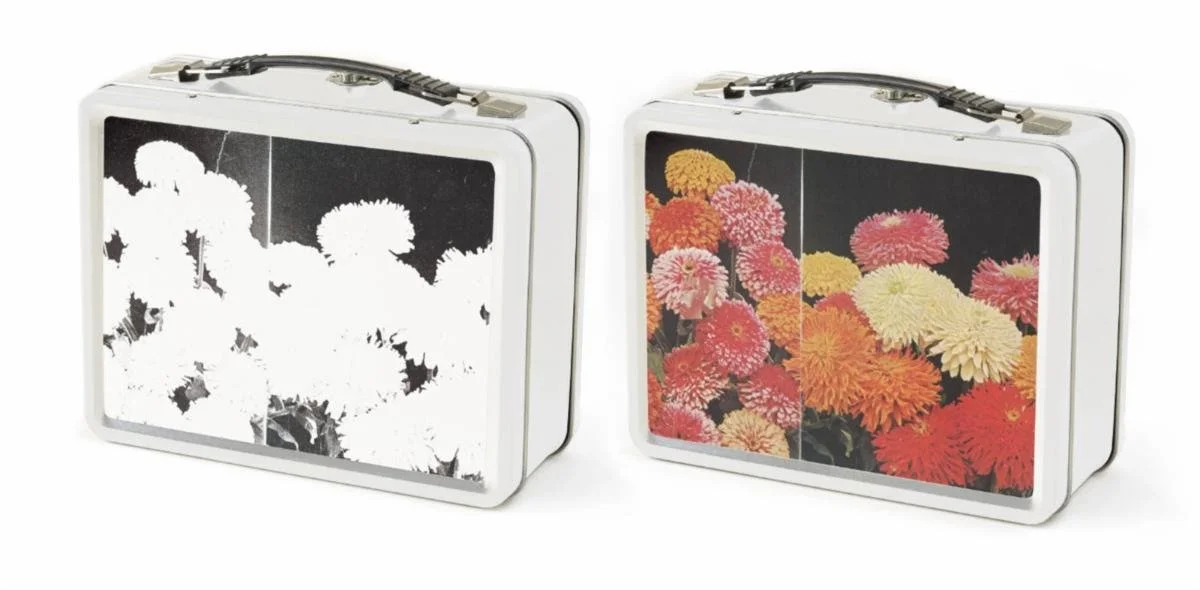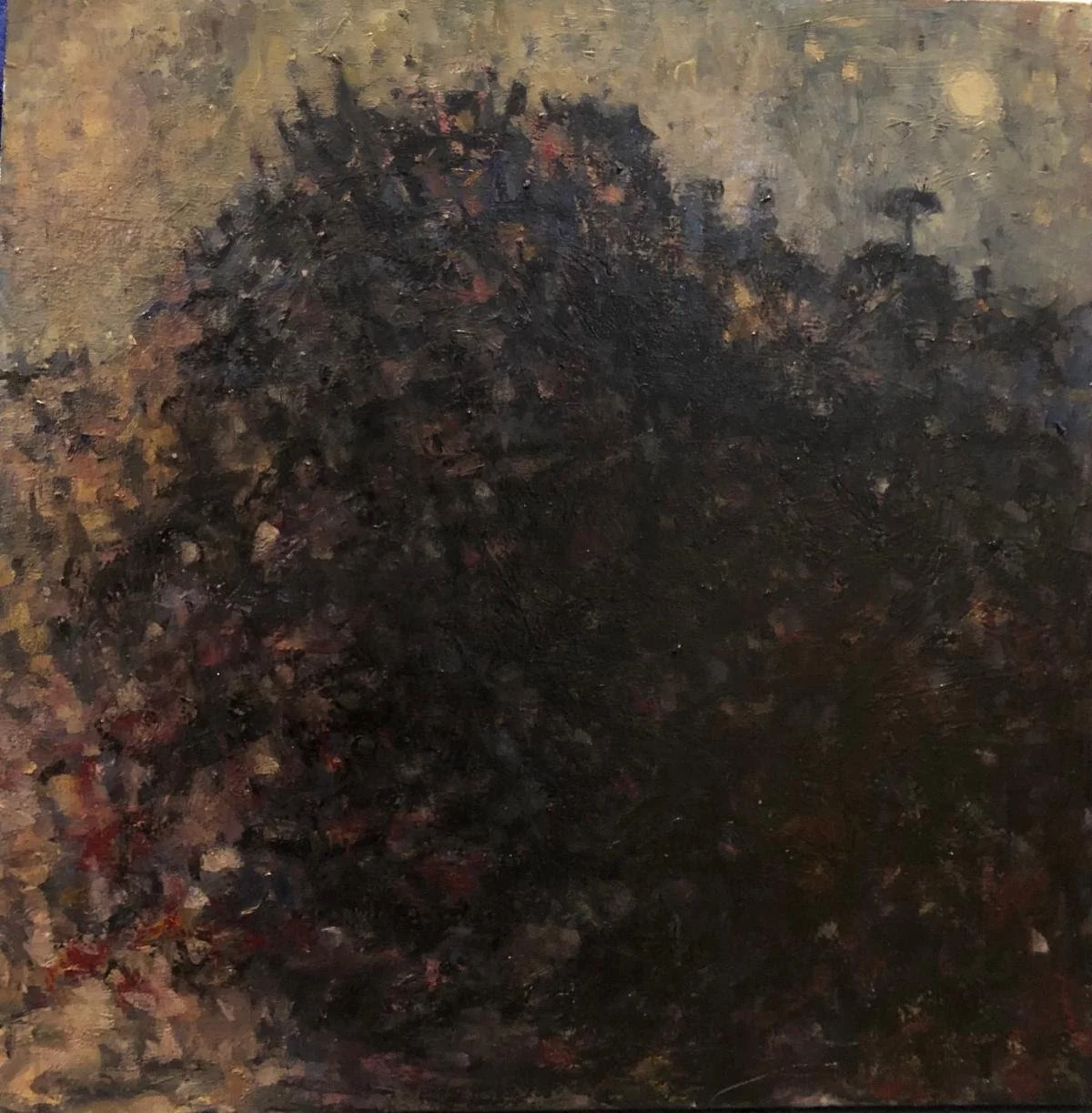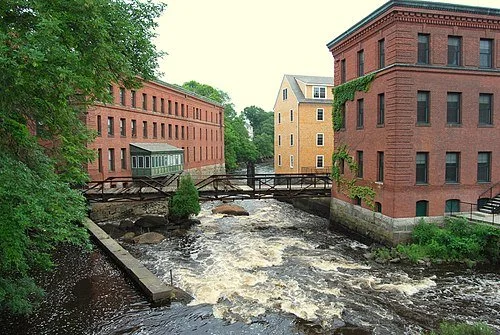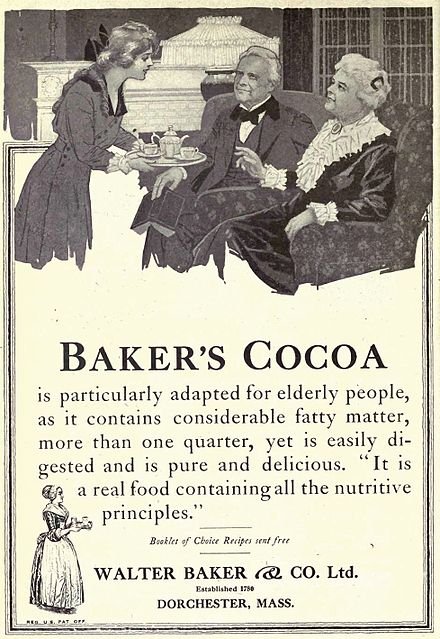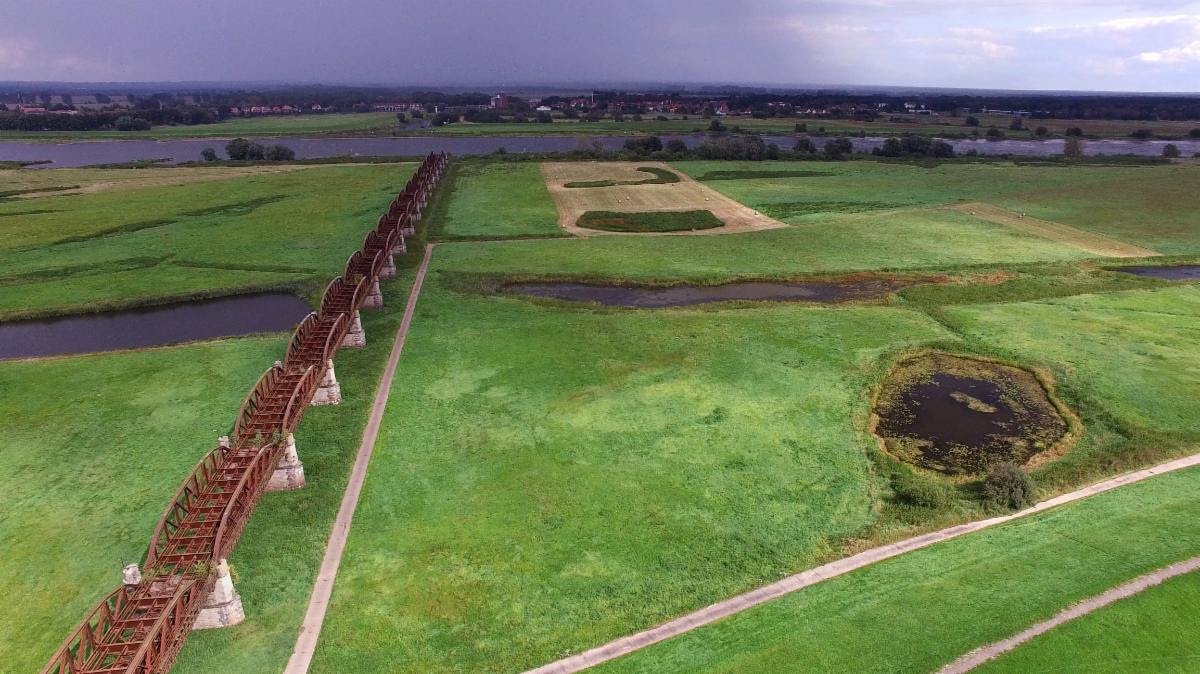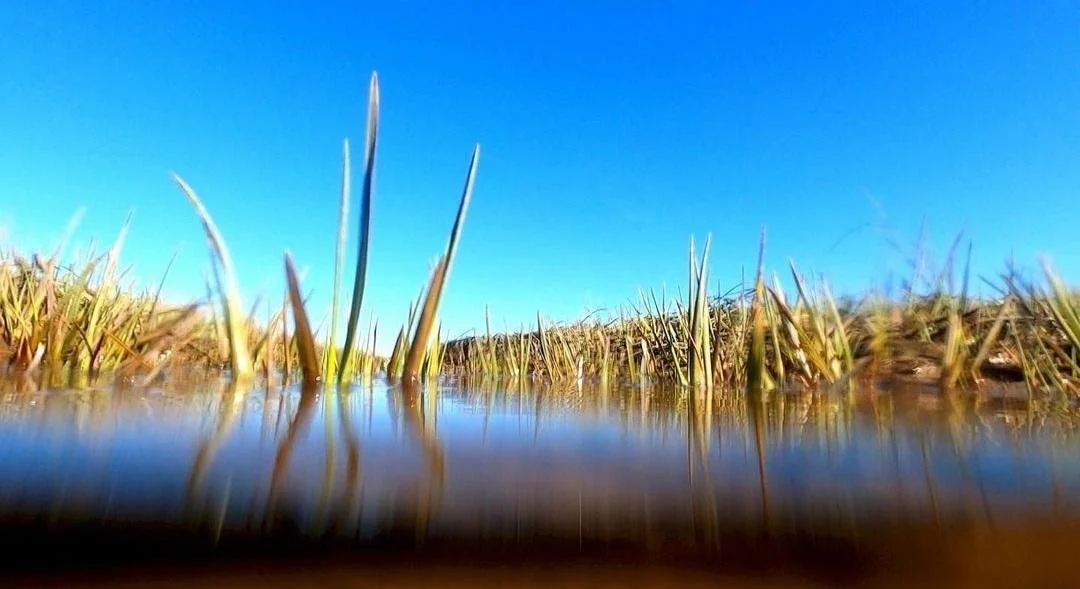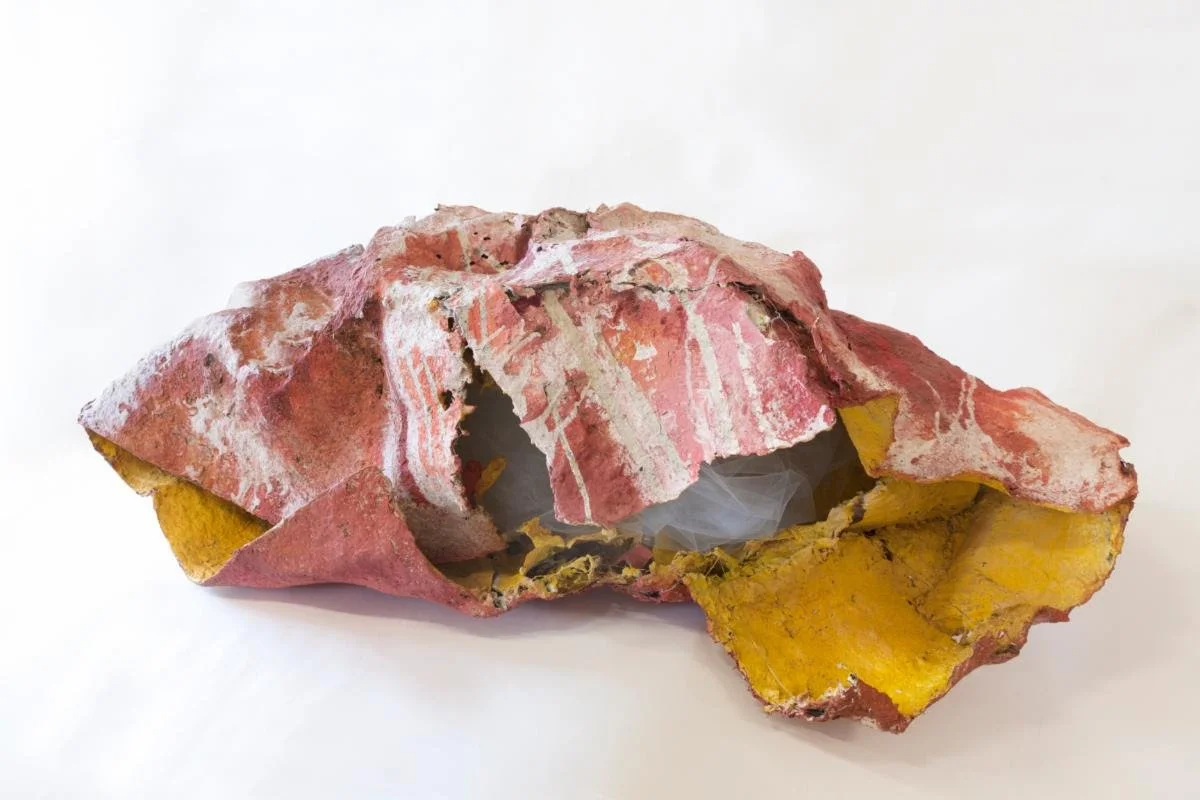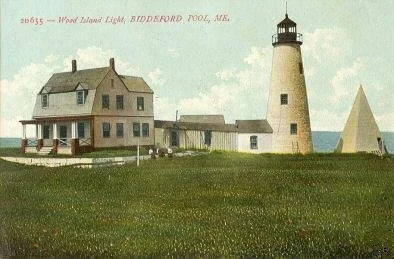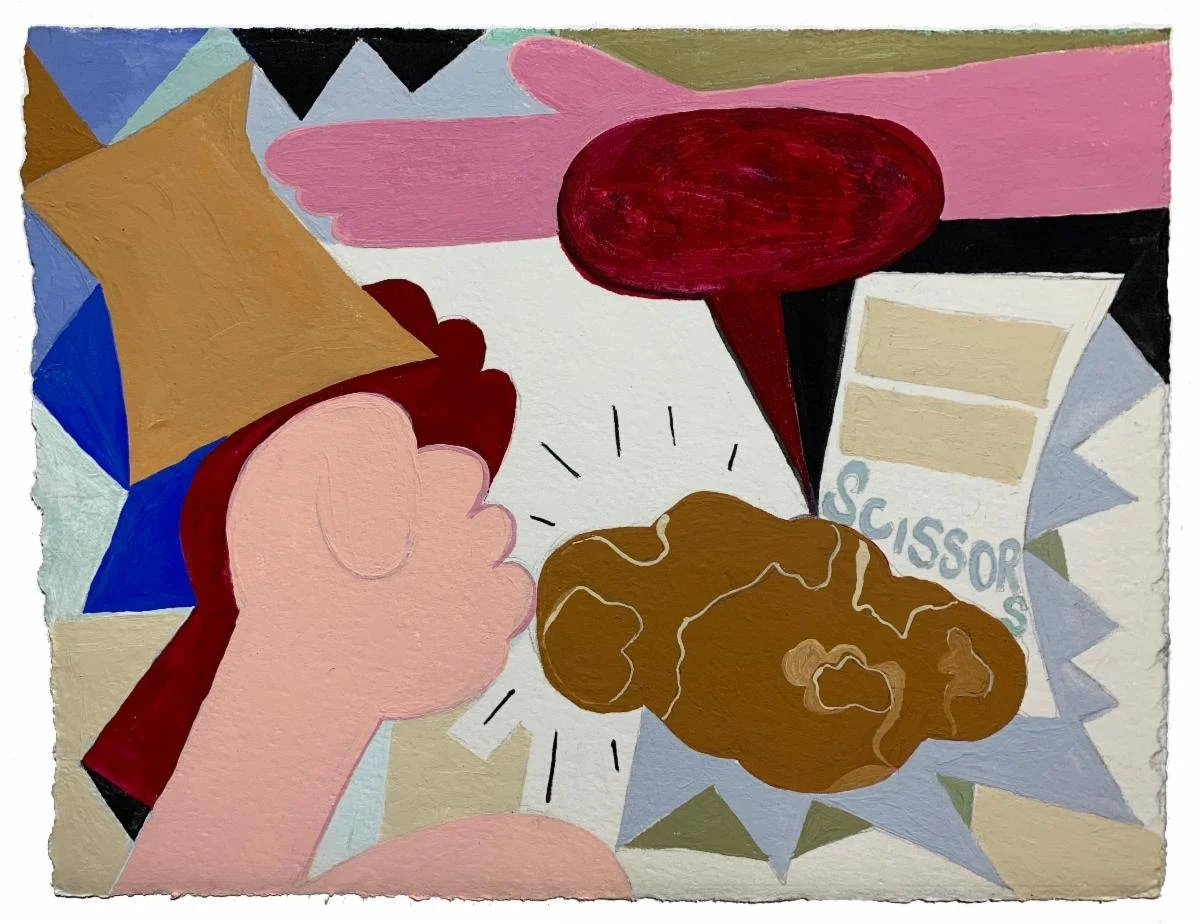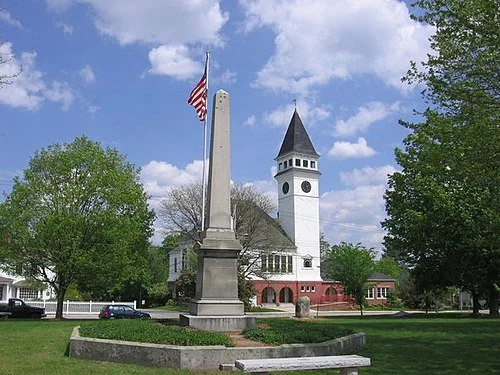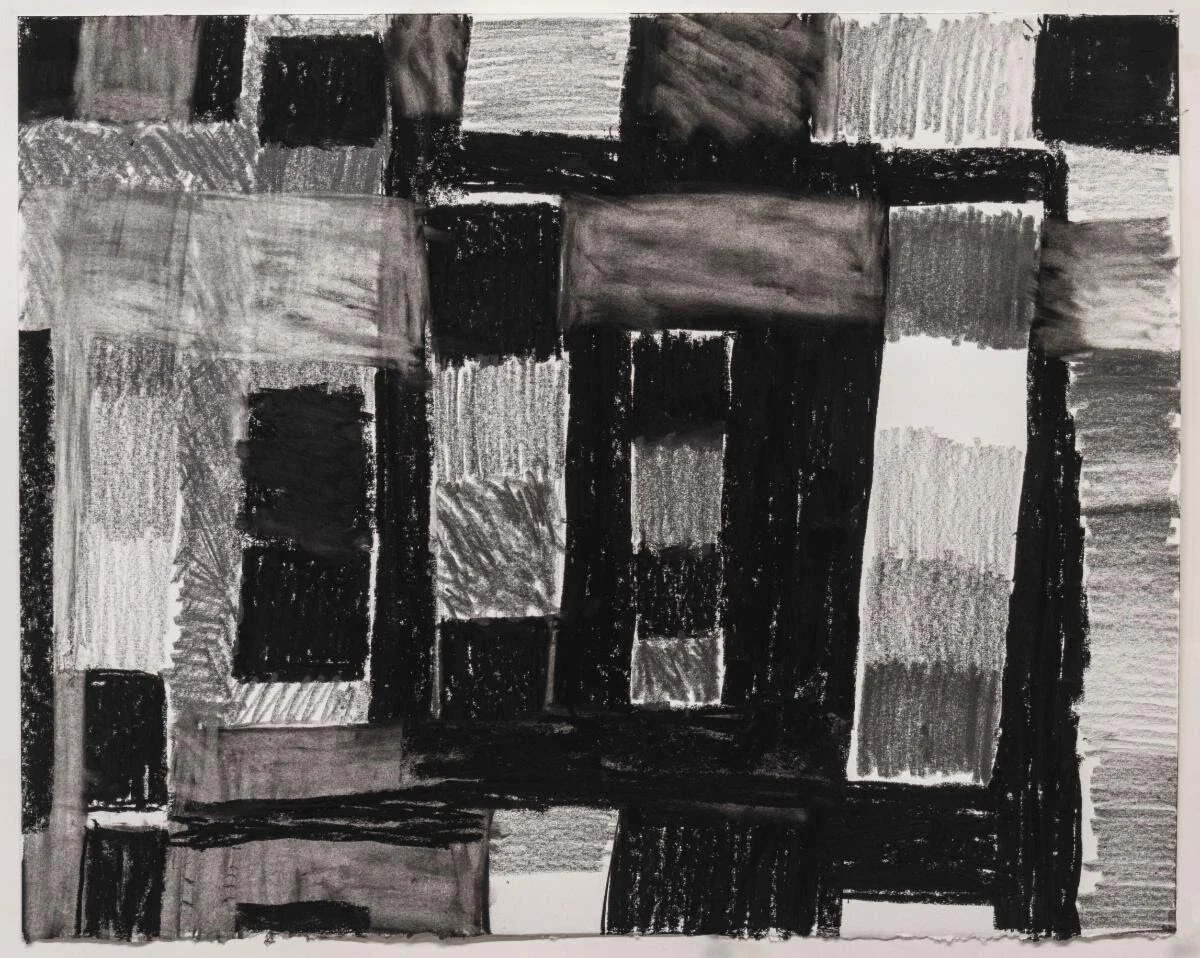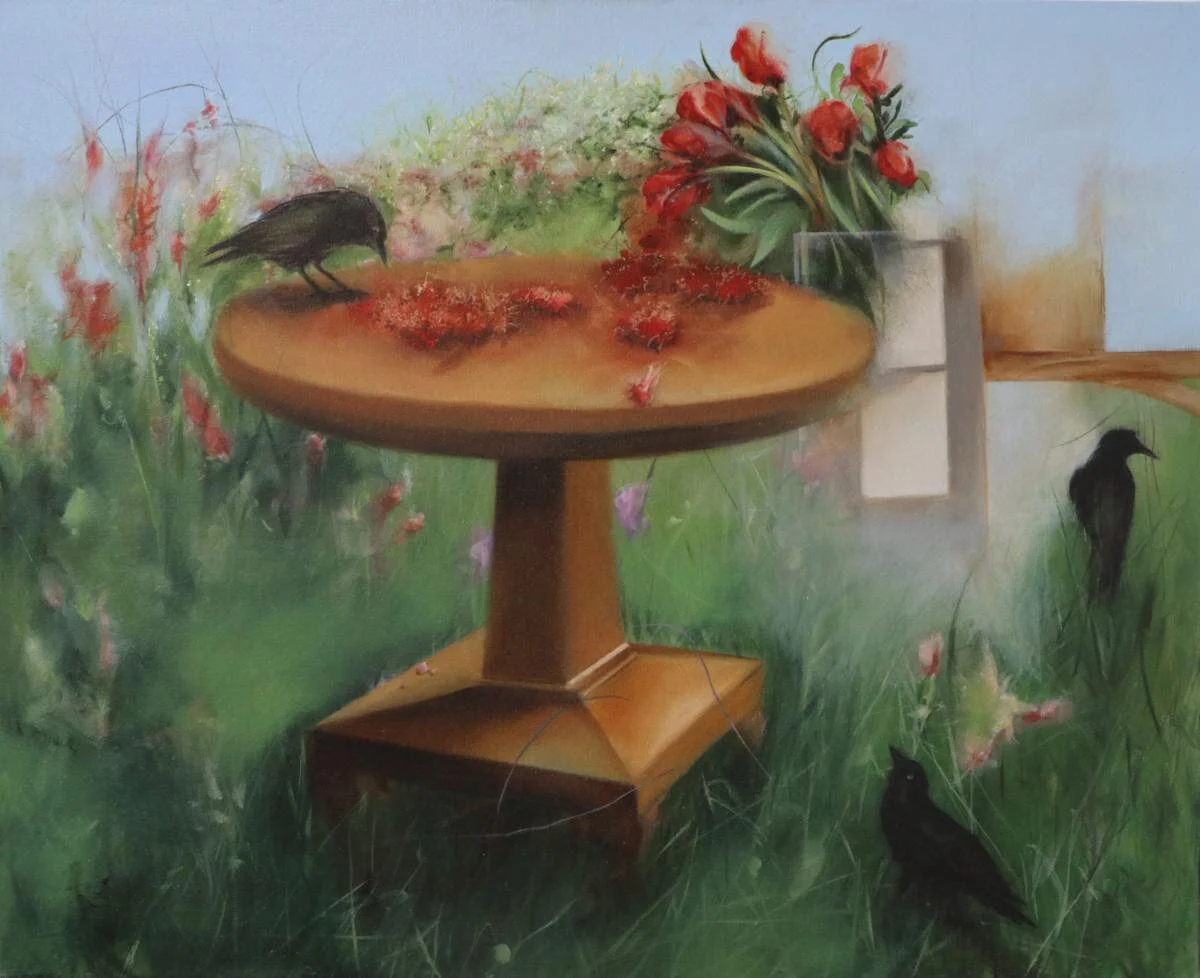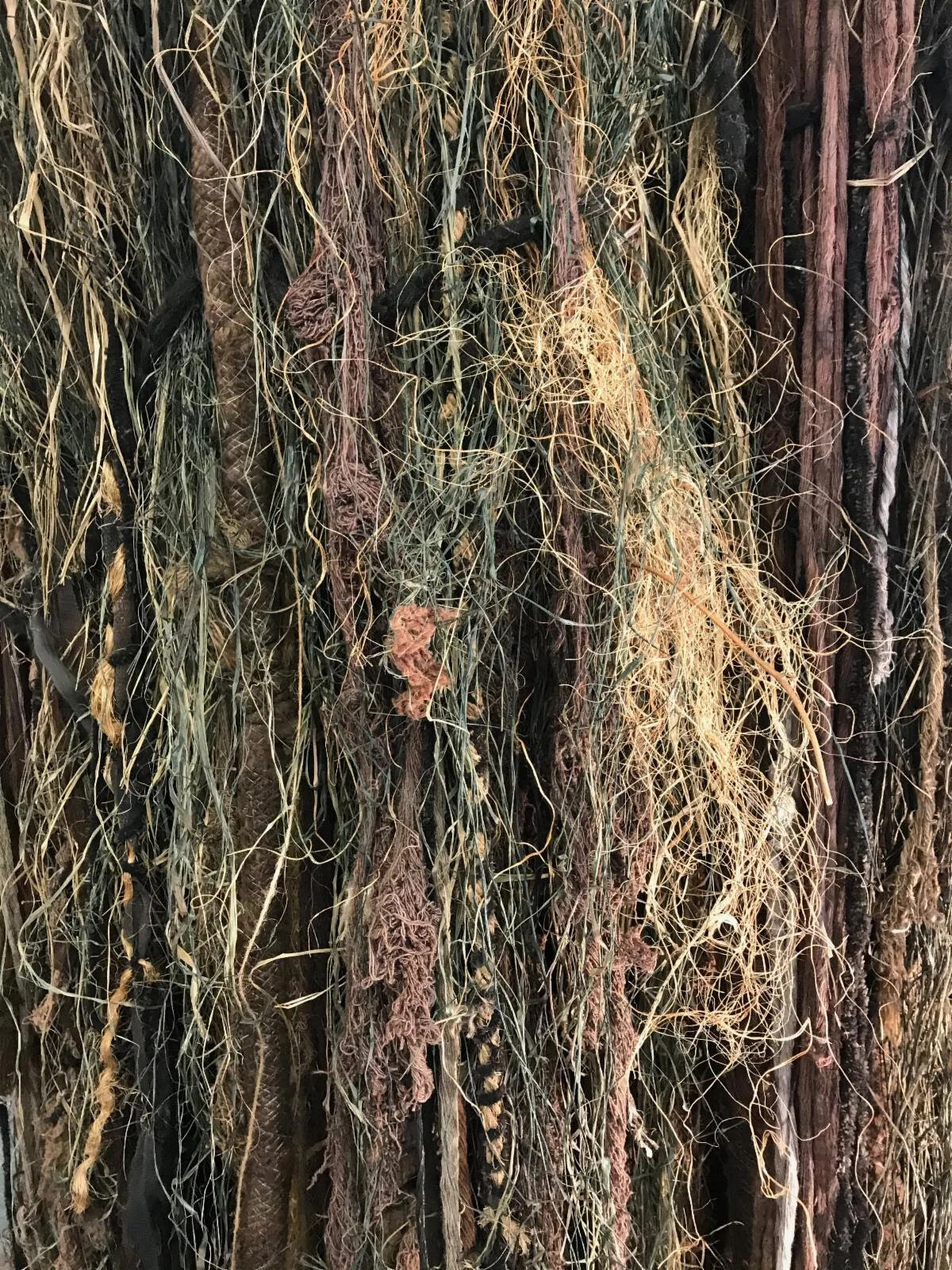‘Fragile systems of beauty’
“Breakthrough” (sculptural collage, mixed media including wood panels, tree bark, acryli and plexiglass), by Boston area artist Luanne Witkowski, in her show “Clarity,’’ at Kingston Gallery, Boston, March 1-April 2.
The gallery says:
Ms. Witkowski “uses both found natural materials and fabricated cast-offs and scraps, focusing on composition, recurrent pattern, minimalist form, and color to create an artistic response to the fragile systems of beauty and the raw power that exist in both the natural world and urban landscapes. For the artist, this response is accessible through the contemplative creative process of perception, when we allow ourselves to relax into our senses. Witkowski’s daily routines - walking through forests, parks and countryside of wildlife, flora and fauna followed by engagement with city streets, glass and artificial light - interweave the interaction and juxtaposition of her various materials. In doing so, she recalls the shared experiences grounded in each of us: creating a perceptual and spiritual relationship for recognition of and solace for the self. This approach to the identification of the individual with landscape and environment is enlarged by a desire to discover and connect with the particular indwelling essence or energy of clarity.’’
Like all times, 'historic’
“American Negroes, A Handbook” (acrylic and collage on canvas), by Massachusetts writer Karmimadeebora McMillan, in the show ‘‘Hard Times,’’ at Kingston Gallery, Boston, Jan. 5-Jan. 29.
The gallery says:
“We live through unprecedented and historic times, and future generations will look back and ask us; who were we and what did we do during the past few years? The selection of artworks in this exhibition, ‘Hard Times,’ focuses on the COVID-19 pandemic, racial justice, economic inequity and climate crisis. Out of instability, fragility, and mortality must come solidarity, strength, and life. This show offers us an opportunity to come together and intentionally reflect on our current moment to hold ourselves accountable.’’
Buy art to support refugees
“Colibri” (lithograph), by Somerville, Mass.-based Phyllis Ewan, in the show “Kingston Members: Celebrate Renewal,’’ at Kingston Gallery, Boston, Nov. 30-Dec. 24.
— Photo courtesy Kingston Gallery
Colibri refers to a species of hummingbird
In this show, Kingston Gallery members present a variety of work in a multitude of mediums. The show's mission is to "renew our connection to art and to celebrate community after years marked by pandemic and ongoing conflict." The gallery encourages the public to come ready to buy art off the walls to support the Boston Medical Center's Immigrant and Refugee Health Center.
‘When home is hard to find’
“What I Have Found (detail)” (family ephemera), by Krystal Brown, in her show “Calling Home: Family Archives’’ at Kingston Gallery, Boston, through Nov. 27.
The gallery says:
“Krystle Brown compiles many layers of their late mother’s life growing up in Boston’s Dorchester, Mattapan, and Roslindale sections. Using family ephemera, photography and sound installation, Brown traces the many homes where their mother grew up and the people woven throughout her life. Part genealogy, part narrative, {the show} delves into the exploding economic inequality that threatens to unmoor social fabrics. By examining generational upheaval through displacement, Brown calls to attention the sanctity of the home, when home is hard to hold.’’
A portion of Roslindale Square on Belgrade Avenue, across the street from the Roslindale Village MBTA commuter rail stop.
— Photo by RHKindred
Boston as seen from the ESA Sentinel-2 satellite.
— Copernicus Sentinel-2, ESA
‘Arise and dissolve’
From Boston-based artist Ilona Anderson’s show ‘‘The Union of the Sun and the Moon,’’ at Kingston Gallery, Boston, through Oct. 2.
The gallery says:
“Ilona Anderson’s animations for her show are full of the familiar, the distant, unknown, imagined, and everyday. Bright lyrical vignettes of animals and people dance before us in a metaphysical picture plane, spilling across the space into ever-building expanses. Every layer of each animation must be composed perfectly. As the creator she must see it second by second. Building the animations by changing one mark at a time to create a sense of movement is like adding one brick to a wall, one layer at a time. She weaves the images into both linear and non-linear spaces, forming spatial contradictions that emphasize the vastness of space and the immediacy of our experience. The impermanence of these expressions for Anderson shows how things arise and dissolve every day in the natural world around us. The artist loves the act of creativity, the discovery of what manifests from her imagination. Anderson states that ‘you must listen to the work and it will tell you where to go.”’
‘Regimented chaos’
"Crack an Egg on your Head, Let the Yolk Drip Down, Seesaw" (flocking, resin, wood, metal, and mixed media), by Greater Boston-based artist Meagan Hepp, in her show “Play Date: Companions Club, at Kingston Gallery, Boston, through Oct 2.
The gallery says:
“Meagan Hepp’s work balances advanced planning with chance. Each Companion is made from a base of flocking and resin and is mixed with found objects, acting as a catalyst for regimented chaos. The Companions in the installation are based on nostalgic toys and pop culture references from the late 1990s and early 2000s that specifically resonate with Hepp’s childhood. Hepp combines discarded plywood, disco ball mirror, and other recycled materials taken from everyday life to give each piece a distinct personality, in a way creating a three-dimensional puzzle. Finding themself suddenly cut off from their social networks and communities during the COVID-19 crisis, Hepp began to think of their sculptures as company. As these sculptural friends started to accumulate and interact with the furniture, architectural built-ins, and everyday objects in Hepp’s home-studio, Hepp found themself yielding their space to what began to feel like a ‘Companion playground’’’.
Engagement with Vt. landscape
"The Sky is Falling" (mixed media and acrylic), by Boston area-based Anne Sargent Walker, in the group show “Drawn Togther,’’ at Kingston Gallery, Boston, through Aug. 28.
Her Web site says:
“Anne’s semi-abstract paintings in oil and acrylic often combine fragments of vintage wall paper, painted birds, jumping men, and other images which explore our relationship to the natural world. Most recently Anne has been compelled to express her concerns over environmental issues. She attributes her interests in nature to childhood summers in Vermont with a naturalist father, and her continuing engagement with the rural Vermont landscape.’’
'Blurring of life and art making'
From Nat Martin’s show, “Untitled Afternoon,’’ at Kingston Gallery, Boston, June 29-July 31. He lives in the Boston area.
The gallery says:
“This is a collection of small objects made outside the studio, within the orbit of his family. The title of the show suggests a blurring of life and art making, with a practice that is not reliant on the isolation of the art studio. Intimate, poetic, humorous and sometimes mournful, they are made of the stuff of life and family. In Martin’s words: ‘There are many references of our domestic life and what was around us - tipping laundry, toys, birthday cakes, aging, clutter, love, school projects, unfinished projects, marriage, cherubs, joy, sadness, mini golf.’ The work in the show has both a sense of discovery and surprise. They were inspired by the uninhibited creativity of his young kids, who were sometimes also his artistic collaborators.
“Known for his photography, Martin initially had no intentions of exhibiting his sculpture; rather he referred to their fabrication as his playground, a place where there were limitless possibilities of what he could make and the materials he could use. All the work reflects the poetry of everyday life and parenting with all its foibles and triumphs. Home and Art collide. Martin’s 12-year-old child has a memory of Martin at the stove cooking salmon, while melting a wax Minnie Mouse for the next piece.
Visit here for a bio of Nat Martin.
But don’t look down
‘‘Climb to the Rise’’ (oil on canvas), by Judith Brassard Brown, at Kingston Gallery, Boston.
Her artist statement:
‘The acts of making and viewing are opportunities to heal. While paintings may appear traditional at first glance, they do not recreate a specific location or event. Rather, each provides connections across boundaries of time or a captured moment, contrasts what we see with what we sense below the surface. Their qualities may activate our capacity to connect with others and with our own buried emotions. In recognizing what is compressed, that recognition may activate a corresponding release of psychic burden and an increase in joy.’’
She’s based in Boston’s Dorchester section.
Neponset River at Lower Mills (2009). Dorchester on the left, Milton on the right (south) side of the river.
Baker's Cocoa Advertisement in Overland Monthly, in January 1919. The manufacture of chocolate had been introduced in the United States in 1765 by John Hannon and Dr. James Baker in Dorchester, then a separate town from Boston. The long-gone Walter Baker & Co. was based in Dorchester.
‘Boundaries/Borders’ in Boston
“River Elbe: Bridge to Nowhere’’ ( archival digital print), by Boston-area-based fine-art photographer Bonnie Donohue, in the show “Boundaries/Borders,’’ at Kingston Gallery, Boston), through March 27.
The gallery says:
“What does it mean to exist within a border? How do we define the hard lines or soft edges of boundaries and the liminal spaces around and between them? Exhibiting the work of Kingston Gallery members Ilona Anderson, Bonnie Donohue, Susan Greer Emmerson, Randy Garber, Meagan Hepp, Ponnapa Prakkamakul, Luanne E Witkowski, ‘Boundaries/Borders’ displays a multitude of interpretations of boundaries of all kinds: geopolitical, psychological, environmental, spatial, and more.
“A border can exist as an invisible geopolitical line between countries and across time. Bonnie Donohue's seminal work takes viewers to the site of the Berlin Wall and the European Green Belt, a completely demilitarized green space along the Iron Curtain that nonetheless remains a visible boundary line. Exploring the boundaries between outer surface and inner reality, the natural world and human relationships, Susan Greer Emmerson's distressed Tyvek sculptures reveal the poignant edge between trash and beauty. The combination of manufactured hard and organic soft edges of her materials and surfaces offer Luanne E. Witkowski a means to question the boundaries in nature by combining paint and wood in multiple layers. Ponnapa Prakkamakul's stereographic collages based on the view through the Atacama Desert observatory telescope imagine a new, alien landscape, beyond the bounds of Earth.
“Artists also engage with psychological and emotional realms, breaching liminal spaces barely perceived by the mind. Meagan Hepp's watercolor paintings of disco balls explore a playful relationship with color and light, imaginatively filling physical spaces left barren by the pandemic. Randy Garber investigates perception and how meaning is deciphered. Her prints evoke both a sense of order and orderly growth gone awry. In a similar vein, Ilona Anderson's digital animation uses the medium of time to explore the arising and dissolving of forms and space, questioning the boundary between the two. Learn more.’’
Treasure trove of life.
“Messages From the Marsh” (video still), by Amy Kaczur, in her show at Kingston Gallery, Boston, through Feb. 26.
Her Web site says:
“Kaczur’s work is grounded in environmental concerns, community and language. Her latest projects are fueled by a sense of urgency related to water issues, specifically coastal flood zones and rising sea levels. She grew up outside Cleveland, with family ties working in farming, food industry, mills, and coal mines in rural southern Ohio to the edges of Appalachia. Those roots impacted her experience of landscape and environmental issues such as pollution and climate change, and the multilayered struggles between land use and conservation. Along with examining these issues in her art practice, she works at Massachusetts Institute of Technology as the group administrator for two research labs focused on air and water pollution, climate change, and clean energy development and storage. She continuously develops her art practice, supported by relentless research, discovery by experiment, and the pleasure of inquisitive searching.’’
Perhaps we aren't doomed?
“Exuberance, Green” (clay, papier mache, wire), by Boston and Biddeford, Maine-based Rhonda Smith, in her show “Say That I Am You,’’ at Kingston Gallery, Boston, through Feb. 27.
The gallery says:
Rhonda Smith’s sculptures “evoke humanity’s connection to the universe through the poetry of Rumi. Her multimedia pieces combine disparate elements of nature to create works that challenge the notion that destruction is our only future.’’
‘Connectedness of all creation’
“Nest” (acrylic, netting, colored sand, papier-mache, wire) by Rhonda Smith, in her show “Say I am You,’’ at Kingston Gallery, Boston, through January.
The gallery says:
“Inspired by the work of 12th-century Sufi mystic and poet Rumi, Rhonda Smith seeks to repair humanity and the broken environment. ‘Say I Am You’ draws from the connectedness of all creation to question the truth of society’s predominant model of colonialism, enslavement, and self-serving capitalism that ultimately destroys the natural world. Smith believes that repair lies in referring to mystics and poets like Rumi, who understood that separating ourselves from the universe is the un-making of all that exists.’’
Ms. Smith is based in Boston and in the southern Maine Coast village of Biddeford Pool, which has long attracted artists and summer people.
‘Playground’
From Jennifer Moses’s show “Rock, Paper, Scissors” (gouche on paper), at Kingston Gallery, Boston, Dec. 1-Jan. 16.
The gallery says from her statement:
“…. Moses explores a playground game literally and metaphorically. This classic game of chance and anticipation is designed to negotiate conflicts, make decisions, and establish power; rock dominates scissors, paper binds rock, and scissors cut paper. The game is also a metaphor for art-making, in which one aesthetic or conceptual choice supplants another. This kind of improvisational response is a signature of Moses's approach to constructing images.’’
You have 5 minutes to untangle
“Aerial Lavender” (ceramic and mixed media), by Linda Leslie Brown, in her show “Entangled,’’ at Kingston Gallery, Boston, through Nov. 28.
Ms. Brown, who lives in Boston, says of her recent work:
“My recent sculptural work draws upon the transformative exchanges between nature, objects and viewers’ creative perception. These works are rife with allusions to the body. At the same time they suggest the plastic, provisional, and uncertain world of a new and transgenic nature, where corporeal and mechanical entities recombine. And because they are small — no larger than a human head — they invite viewers to engage in an intimate examination that is both delightful and disturbing.’’
Mystical physics
“The Mystic Alone Sees the Sun Aglow at Midnight,’’ (tar and gold leaf on canvas), by Christopher Volpe, in his show “Alchemy and After,’’ at Kingston Gallery, Boston, Nov. 3-28. Art New England says:
“Christopher Volpe’s paintings are stark conduits of the inherent oppositions between human beings and the natural world.”
He lives in Hollis, N.H.
Monument Square and Hollis Town Hall
'Ambiguities of abstraction'
“Untitled Drawing” ( charcoal and graphite on paper), by Brian Littlefield, in his show “Smaller,’’ at Kingston Gallery, Boston, Nov. 3-28.“
Untitled Drawing” ( charcoal and graphite on paper), by Brian Littlefield, in his show “Smaller,’’ at Kingston Gallery, Boston, Nov. 3-28.
The gallery says:
“Brian Littlefield devotes his practice to multifaceted ambiguities of abstraction. In his first solo exhibition at Kingston Gallery, ‘Smaller’ seeks to foster a direct approach to drawing, using straightforward materials such as charcoal and graphite. His grayscale works suggest patchwork landscapes, which are born more from nature than from mathematical abstraction. Littlefield’s improvisational work can shift between form and space by compressing internal and external locations, recurring interests, and ruminating thoughts.’’
Clean-up operation
“Fine Dining” (oil on canvas), by Joan Baldwin, at the Kingston Gallery, Boston, through Sept. 26. She works out of a studio at River Street Artists, part of Waltham Mills Artists Association, in Waltham, Mass.
Fate in fiber
“Fate” (fiber), by Massachusetts artist Louise Farrell, this month at Kingston Gallery, Boston.
The gallery says that Ms. Farrell:
“contemplates and weaves together the stories of our lives in “Fate’’ After hearing of a dear friend suffering an unexpected and devastating setback, Farrell felt a resonance with the ancient Norse sagas that she was reading at the time. For the Norse, the symbol of life is represented through a sacred and immense tree named Yggdrasil. In the roots of this great tree are all of humanity’s histories, stories, and lives. Each root is unique; some are long and expansive, while some are very short. Her exhibition consists of a woven sculpture, monumental as an old-growth tree, in the center of the gallery. For Farrell, dyeing and attaching every rope and skein became a meditative process. Together, Fate is a journey through the universality of the human condition..
Mapping emotions
“Map of Mumbling Red,” (mixed media), by Jeesoo Lee, in her show “Pung-Gyeong Moving Scenery,’’ at Kingston Gallery, Boston, through June.
The galley says:
‘‘In the process of layering, cutting, and reattaching materials, Jeesoo Lee combines passing moments in time and the physical spaces in which they have occurred…She captures the fleetingness of memory. Lee weaves poignant recollections such as ‘the sound of a young son’s laughter when he opens his eyes in the morning’ or ‘the anguish of a friend who has unexpectedly lost a loved one’. The work portrays these moments, both the intense and the mundane, to combine and form ever-evolving landscapes. Her work is based on psychological states of being which are then redefined through the physicality of her material. This deconstruction/construction of her imagery investigates the search for meaning and understanding. The result is intricate collage-like fabric pieces that ‘live and breath.’’’
